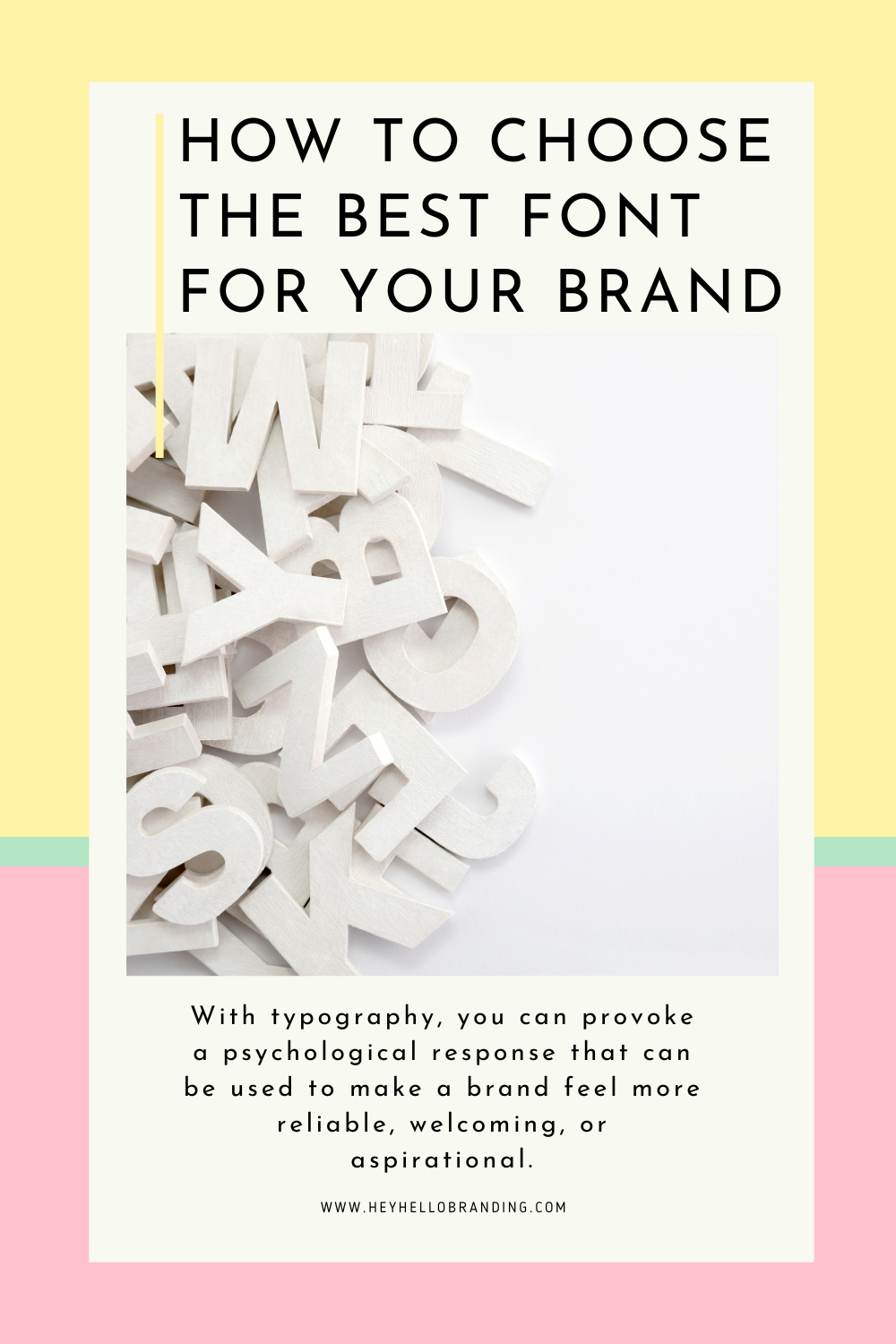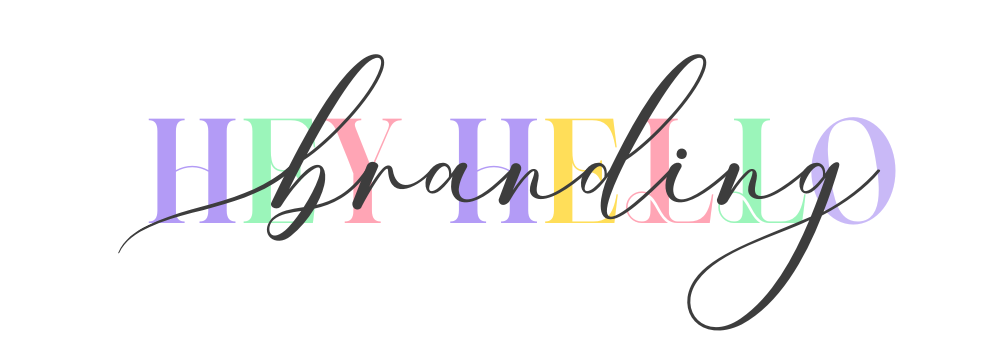Many brands only uses font based logos, because they know that an eye-catching brand visuals aren't only about the colors, a simple written word in a specific font can turn heads.
To choose the best font for your brand, you need to first understand the emotions behind typography. With typography, you can provoke a psychological response that can be used to make a brand feel more reliable, welcoming, or aspirational.
Before we begin, you need to know the terminology associated with typography first.
Font: Allows you to set the size, style and weight of a type. It is the delivery mechanism of a Typeface.
Typeface: is the physical appearance in design.
Font family: is a collection of typefaces that are intended to be used together and consists of varying weights and styles.
Kerning: is the process of adjusting the physical space between individual characters.
Letter spacing or tracking: is the physical space between blocks of characters.
Not to be confused with kerning which is the actual space between individual characters.
Leading: is the amount of vertical space between lines of actual texts.
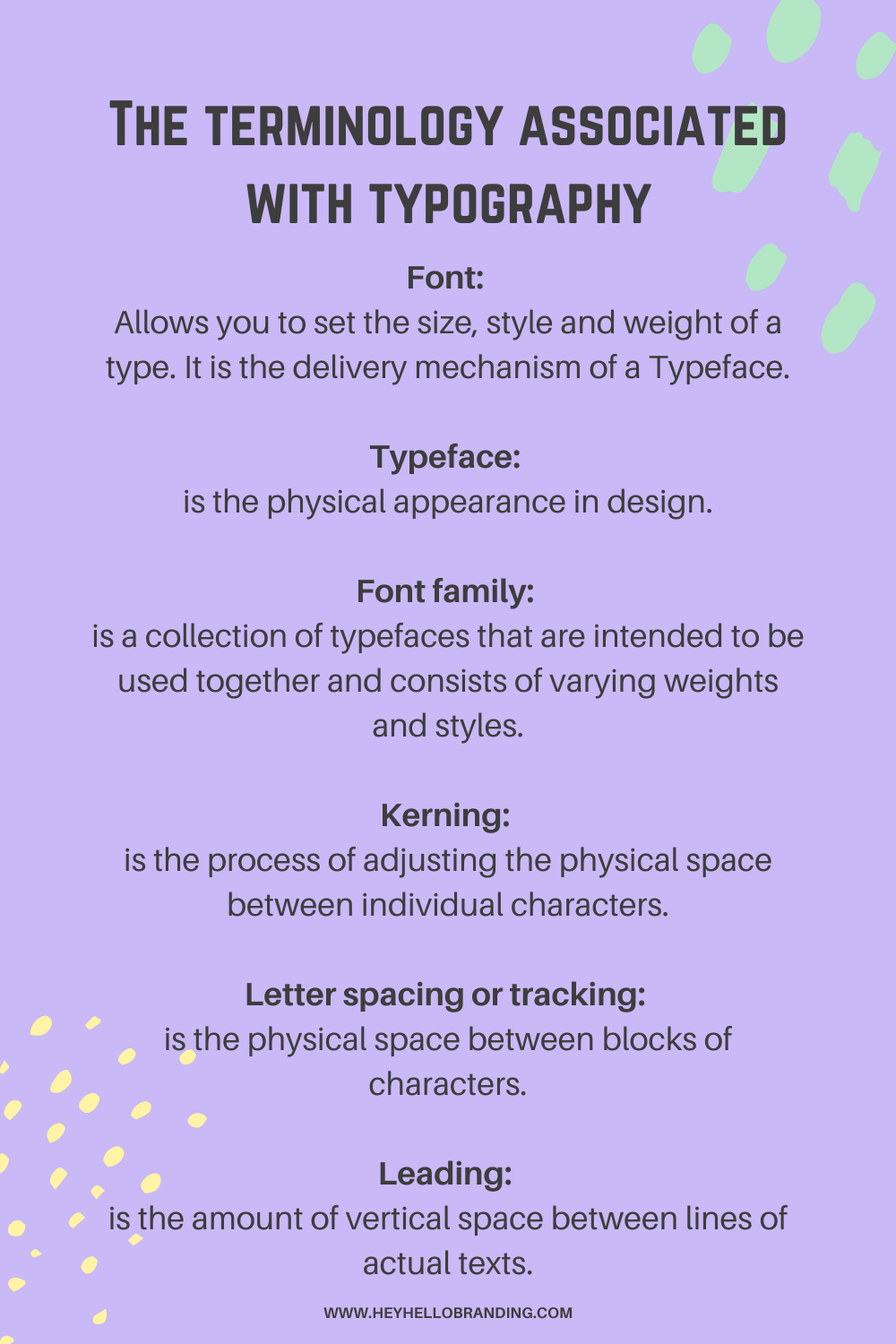
Now you understand the terminology behind typography, so let's dive in.
When selecting a typeface for use within a visual identity, first thing you need to know is that there are five basic types, or families, of fonts: serif, sans serif, cursive, fantasy, and monospace.
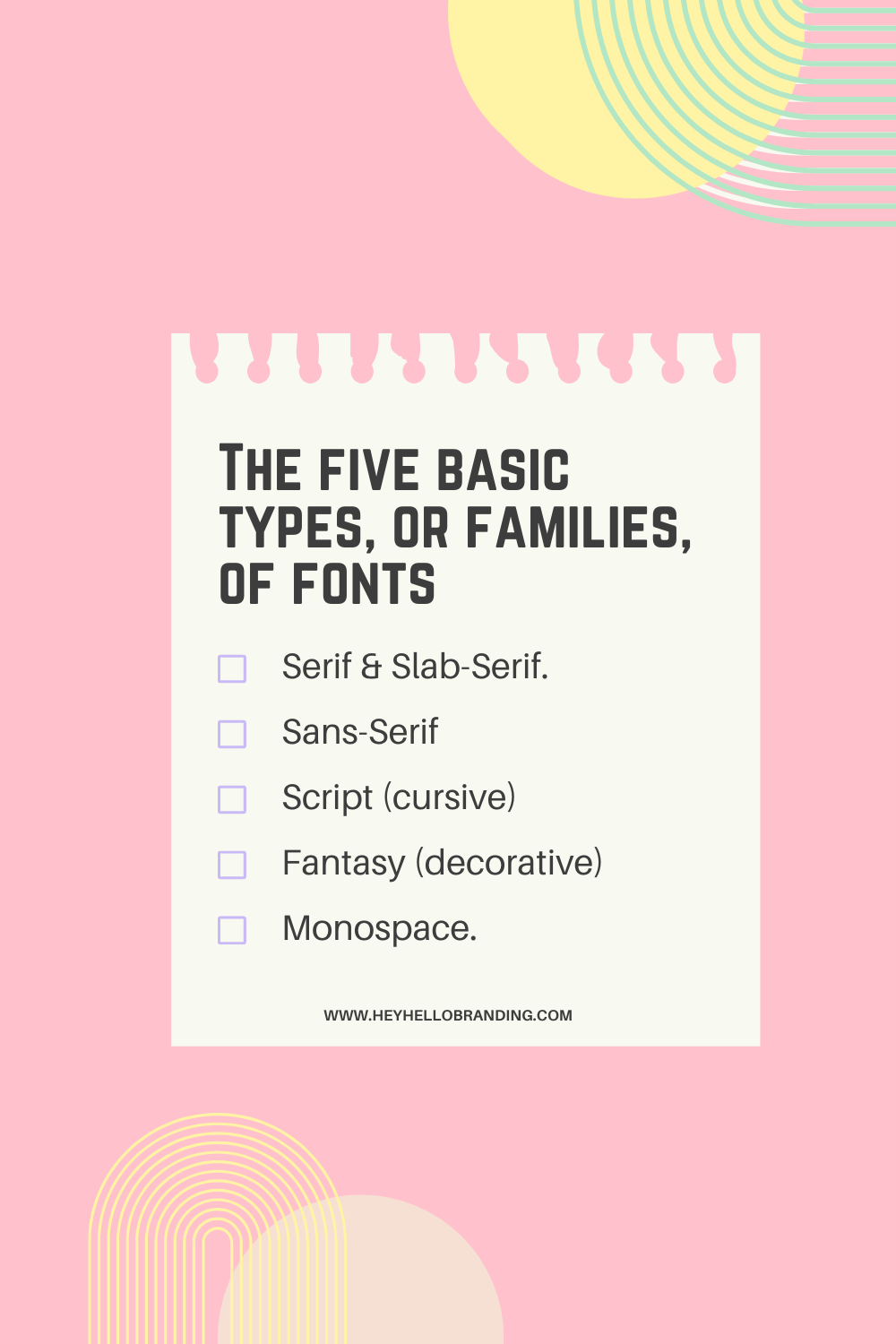
Each of them triggers a certain emotion when used in any design.
Serif:
Represents: tradition, establishment, luxury, etc…
**Slab-Serif (is a variant of the serif typeface, a super thick, blocky serifs.):
Represents: confidence, solidity, boldness, & innovative.
Sans-Serif:
Represents: modern minimalist & simplistic.
Script (cursive):
Represents: femininity, elegance, creativity & personal.
Fantasy (decorative):
Represents: playfulness, friendly & amusing.
Monospace:
Represents: dull, plain, & unimaginative.
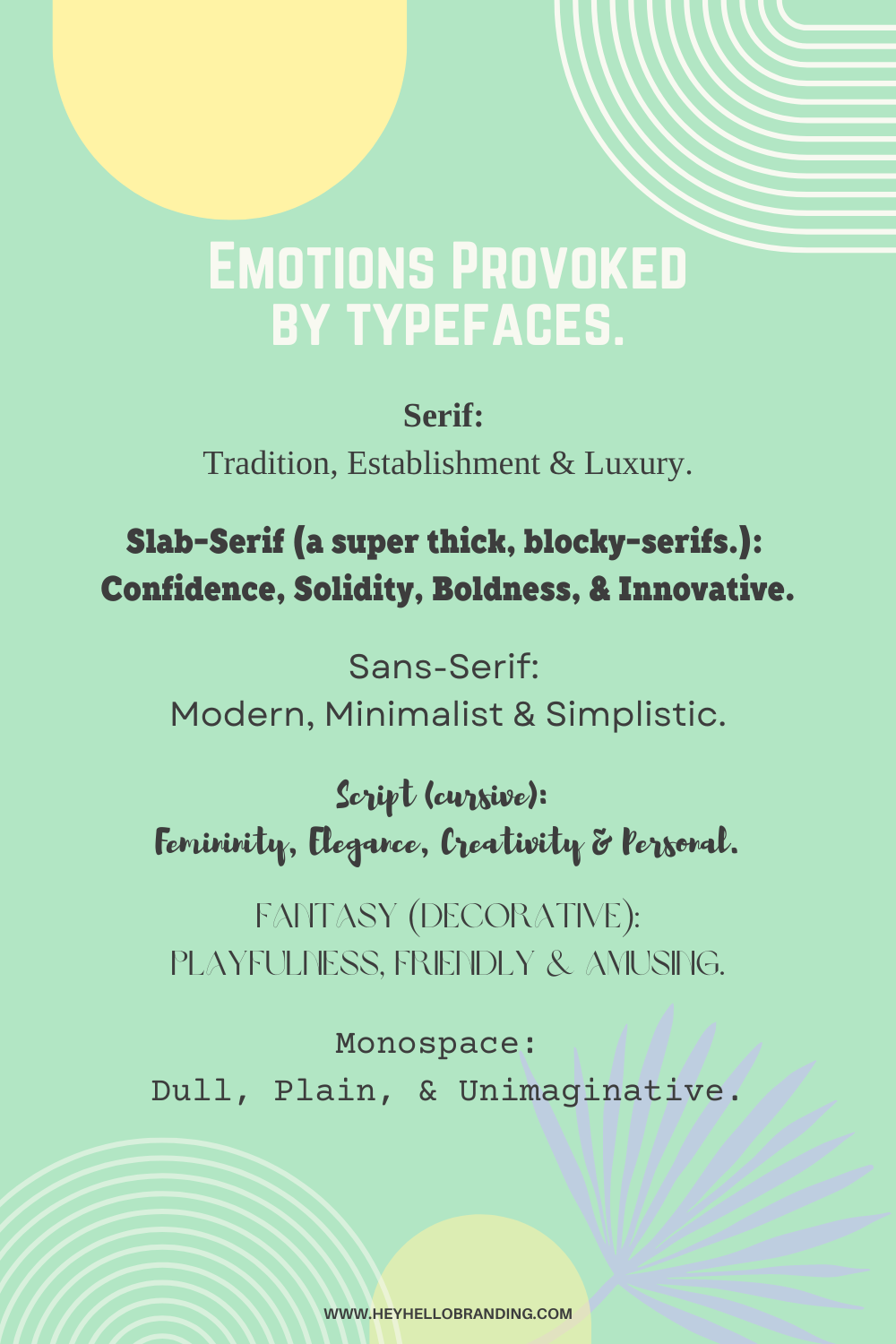
From that you'll be able to choose your fonts.
On a final note, remember that the typeface you use to display the business name in the logo does NOT have to be the typeface you use for the visual identity.
Now that you're familiar with some basic concepts & terminology surrounding typography you will be able to put it to use in your future identity projects.
